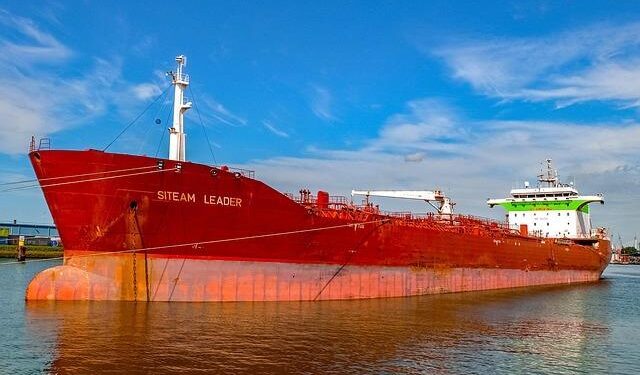DTEK, Ukraine’s leading energy company, has successfully imported its first liquefied natural gas (LNG) cargo from the United States, marking a significant milestone in the country’s efforts to diversify its energy sources. The shipment was delivered via the Klaipeda LNG terminal in Lithuania, underscoring growing regional cooperation as Ukraine seeks to reduce dependence on Russian gas supplies amid ongoing geopolitical tensions. This development signals a strategic shift in Ukraine’s energy landscape and highlights the expanding role of LNG in enhancing the nation’s energy security.
DTEK Launches Ukraine’s First US LNG Cargo Through Lithuanian Gateway
DTEK has marked a significant milestone in Ukraine’s energy sector by successfully delivering the country’s first liquefied natural gas (LNG) cargo sourced from the United States. This landmark shipment entered Ukraine through the Lithuanian LNG terminal, a strategic move enhancing energy diversification and security amid ongoing geopolitical challenges. The Lithuanian gateway acts as a critical transit point, enabling Ukraine to access alternative energy supplies outside traditional routes and suppliers.
Key highlights of this operation include:
- Utilization of the Klaipńóda LNG terminal in Lithuania, bolstering regional energy cooperation
- Increased flexibility in Ukraine’s energy import portfolio, reducing dependency on a single source
- Strengthened strategic ties between Ukraine, Lithuania, and the United States in energy trade
| Parameter | Details |
|---|---|
| Volume of LNG | ~150,000 cubic meters |
| Origin | United States (Sabine Pass) |
| Transit Terminal | Klaipńóda, Lithuania |
| Delivery Date | June 2024 |
Strategic Impact on Ukraine’s Energy Security and European Gas Markets
The arrival of the first US LNG cargo to Ukraine via Lithuania marks a pivotal moment in reshaping the regional energy landscape. This strategic move significantly enhances Ukraine’s energy security by diversifying its gas supply sources away from traditional dependency on Russian pipelines. By integrating American liquefied natural gas into its energy mix, Ukraine not only reduces vulnerability to geopolitical pressures but also gains greater leverage in negotiating future energy contracts. This development underscores the shifting alliances and emerging partnerships within Eastern European energy markets, signaling increased cooperation between the United States and EU nations through transit hubs like Lithuania.
On a broader scale, the US LNG supply to Ukraine has far-reaching implications for European gas markets:
- Strengthening supply diversity: Reducing reliance on Russian gas imports promotes competitive pricing and supply resilience.
- Supporting EU energy solidarity: Collaborative infrastructure projects and joint LNG deliveries enhance collective energy security.
- Stimulating market flexibility: Access to global LNG markets allows Europe to respond dynamically to supply disruptions.
| Factor | Impact |
|---|---|
| Ukraine’s Gas Supply Diversification | Significantly Increased |
| Lithuania’s Role as a Transit Hub | Strengthened Regional Influence |
| European Market Flexibility | Enhanced Through LNG Access |
| Russian Gas Dependency | Moderately Reduced |
Recommendations for Expanding LNG Infrastructure and Diversifying Fuel Sources
To strengthen Ukraine’s energy security and reduce dependence on any single supply route, a multi-pronged approach should be prioritized. Accelerating the development of additional LNG receiving terminals, particularly along the Baltic coast and near major industrial hubs, will increase import capacity and provide critical infrastructure redundancy. Public-private partnerships can catalyze investments in modern regasification units, storage facilities, and pipeline expansions to ensure a resilient supply chain. Furthermore, integrating smart grid technologies will optimize natural gas distribution and enable quicker response to demand fluctuations across regions.
Diversification efforts must extend beyond LNG to include alternative fuel sources such as hydrogen, biofuels, and synthetic gases that can be blended with natural gas or serve as stand-alone energy carriers. Supporting innovation through targeted subsidies and regulatory incentives will attract new players and technologies to the market. The table below outlines key strategic initiatives for expanding infrastructure and fuel diversity, with potential impact and timelines designed for rapid implementation.
| Initiative | Impact | Timeframe |
|---|---|---|
| New LNG Terminals | High capacity boost | 2-3 years |
| Pipeline Upgrades | Enhanced distribution | 1-2 years |
| Hydrogen Pilot Programs | Fuel diversification | 3-5 years |
| Financial Incentives | Market stimulation | Immediate |
In Retrospect
The arrival of the first U.S. LNG cargo to Ukraine via Lithuania marks a significant milestone in the country’s efforts to diversify its energy sources and strengthen its energy security amidst ongoing geopolitical challenges. By partnering with Lithuania and leveraging Western energy supplies, Ukraine is taking critical steps to reduce its historical dependence on Russian gas. This development not only enhances Ukraine’s energy resilience but also underscores the growing role of transatlantic cooperation in the region’s energy landscape. As DTEK continues to import LNG from the United States, the move is expected to provide a more stable and reliable energy supply for Ukraine in the months and years ahead.















